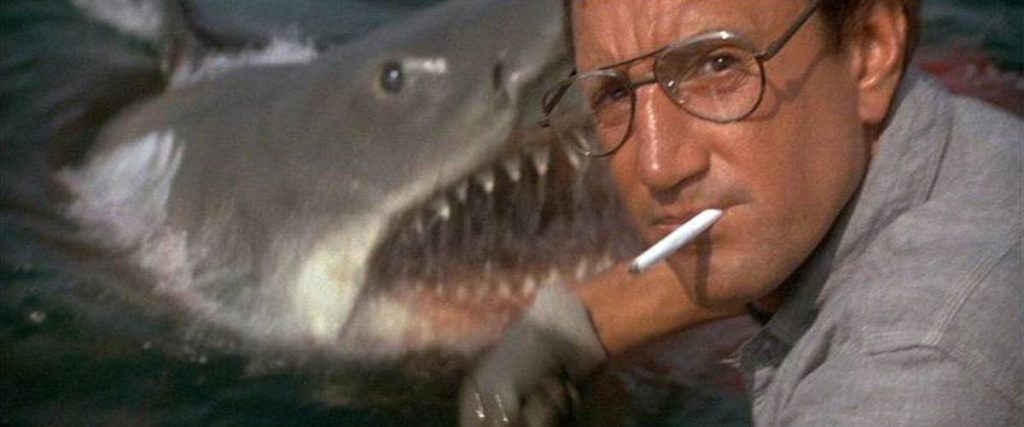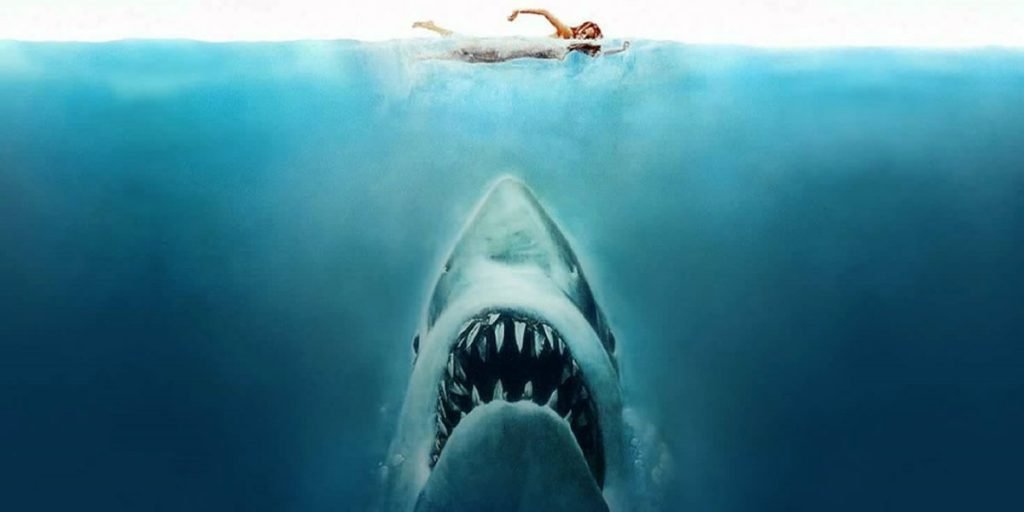Forty-five years after its initial release, Jaws reminds us why it continues to thrive within our cultural canon.
Jaws is one of those films you know about long before you probably saw it: famous scenes, characters, shots, and dialogue have inspired legions of filmmakers, been satirized by everyone from Airplane! to Jimmy Neutron. Not to mention its iconic score that has been remade and reused in everything from children’s cartoons to sporting events. Now, forty-five years after its initial release, the shark film that spawned a thousand inferior rip-off movies is getting a new box-set release. To commemorate this milestone, we here at Loud and Clear decided to revisit the film that made a generation afraid to go in the water. So, how does Steven Spielberg’s first major blockbuster hold up?
Well, in case my rating hasn’t given away my opinion already, Jaws holds up extremely well. The film follows Brody (Roy Scheider), a big city cop who has recently been made sheriff of a small, coastal New England town. When a bather is found dead from alleged shark wounds, he must work to keep the town safe, despite the mayor’s insistence that the beaches remain open for peak tourist season.

First of all, Let’s take a moment to commend Spielberg’s eye for detail, and incorporation of smaller and more subtle aspects to thoroughly flesh out his world. For example, his ability to contrast the immense danger of the shark in the water with the perceived innocence of a small town is masterful. As Brody desperately tries to control the shark situation, he is constantly bombarded by residents caught up in their own, normal small town problems, such as kids learning karate chopping things in town. Spielberg’s attention to the small things contribute greatly to Jaws’ success.
Jaws is also able to build tension without really needing to try that hard; The famous opening scene shows the fate of the shark’s first victim, revealing to the audience that there is danger in the water. Later on, we watch a scene of a mass of people enjoying a sunny day at the beach. Out of context, the scene would just be innocuous footage of people enjoying their lives. There’s no dramatic score or lighting, it’s just clips of people swimming, resting on beach floaties, and playing fetch with their dog. Because of the planted knowledge earlier in the film, however, the scene becomes tense and suspenseful because we know that these blissfully unaware civilians could, at any moment, meet a violent and bloody demise.
The craft of the film is also masterful: The cinematography is iconic, particularly the famous push-pull close-up of Brody. On top of that, the underwater shots are aesthetically beautiful, but are still haunting given the context of the danger that lurks beneath. The music is also fantastic: I’ve never met a John Williams score I didn’t like, and Jaws is just another example of his mastery and versatility as a composer, nailing everything from more lighthearted and quirky numbers, to the and ominous and intense theme that has become synonymous with both the movie, and all things sinister.
One thing I didn’t expect to resonate with me so well is the plot. Now, I can already see you thinking to yourself: “It’s a movie about a big man-eating shark, how complicated could it be?” Well, not only does Jaws do a good job of developing compelling characters, but what’s probably considered to be its largest plothole has suddenly started to make a lot of morbid sense given the backdrop of current events: As of writing this, just about every state in the US is trying to re-open despite massive civil unrest, as well as a spike in Covid-19 cases. Essentially, sacrificing their health and safety for the good of the economy. Suddenly, a small-town mayor trying to keep a beach open in the name of profits, despite deadly safety hazards, does not seem so far-fetched.
One of my favorite things about Jaws, something I refer to as “the Jaws effect.” I apply this to any film, mostly horror, where the monster is rarely seen, but that only serves to make the monster even more frightening. During the making of the film, the animatronic shark they used constantly malfunctioned, meaning Spielberg couldn’t use it as much as he would’ve liked. Because of that, the shark is rarely seen on screen, but it works to the film’s benefit. If the shark was shown to often, the audience would have time to acclimate and become desensitized. But because we more often only see the carnage wrought by the monster, we’re left at the mercy of our own imaginations, imposing our own fears onto it, making it all the more frightening.
Jaws is a hallmark of American cinema, and rewatching it will remind you why. Combining elements of drama, horror, and adventure films, along with groundbreaking practical effects and that signature Spielbergian flare, Jaws remains an early masterpiece from one of North America’s most beloved film directors. It may be frightening in places, but there’s a reason we’re still celebrating it forty-five years later.
Jaws is now available to watch on digital, on demand, and on 4K Ultra HD. Find out what makes Jaws a perfect Fourth of July movie!

